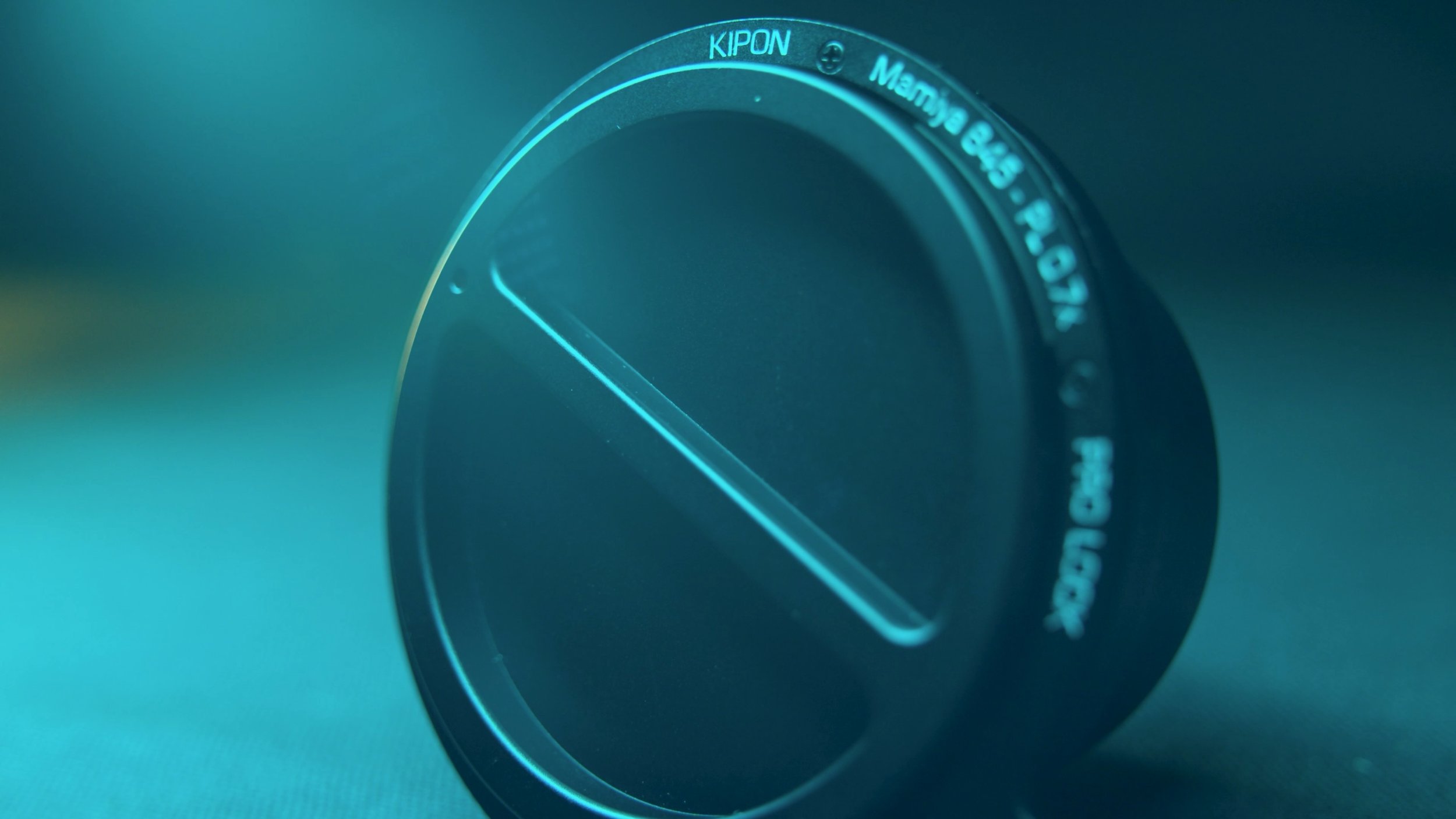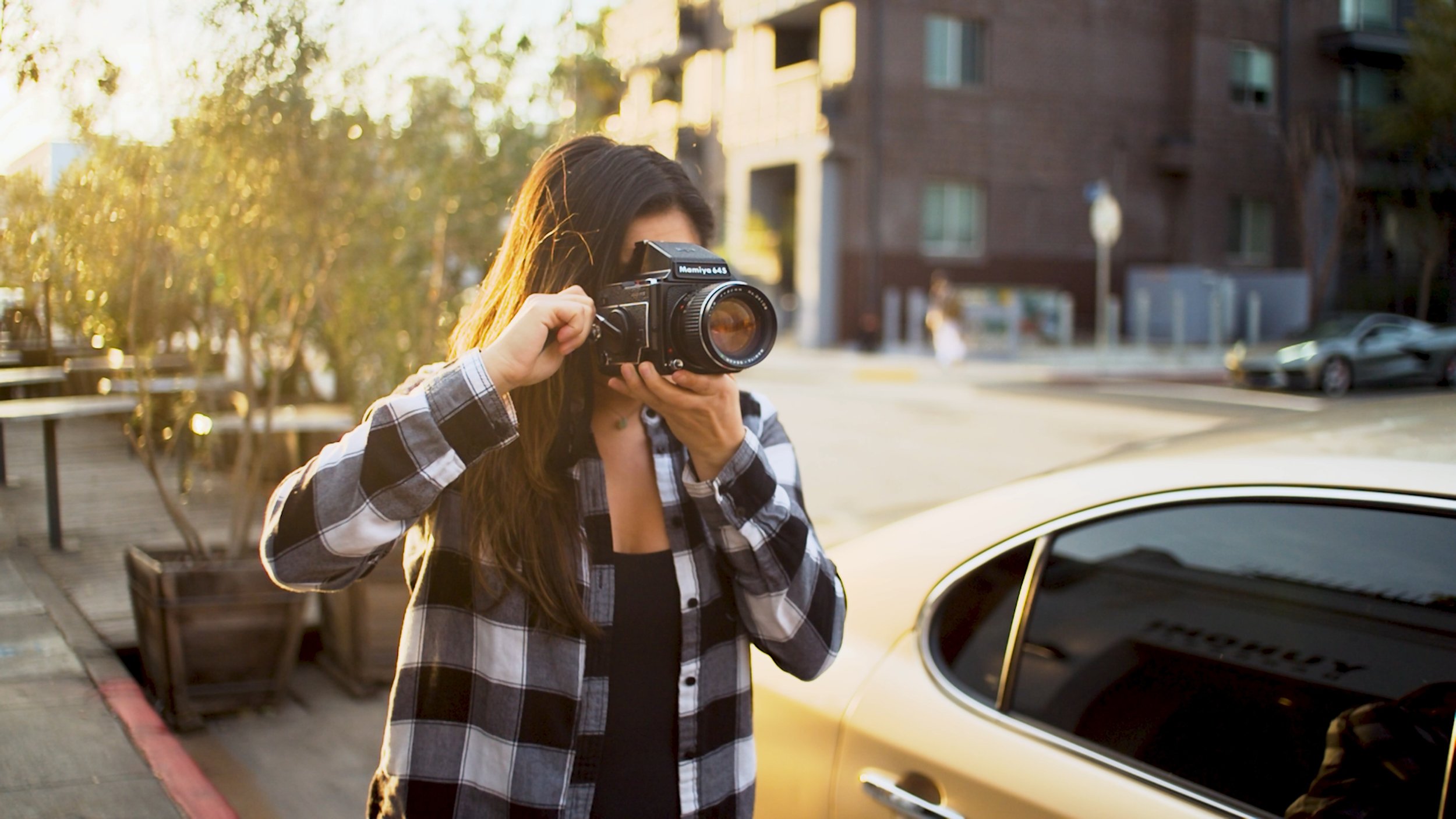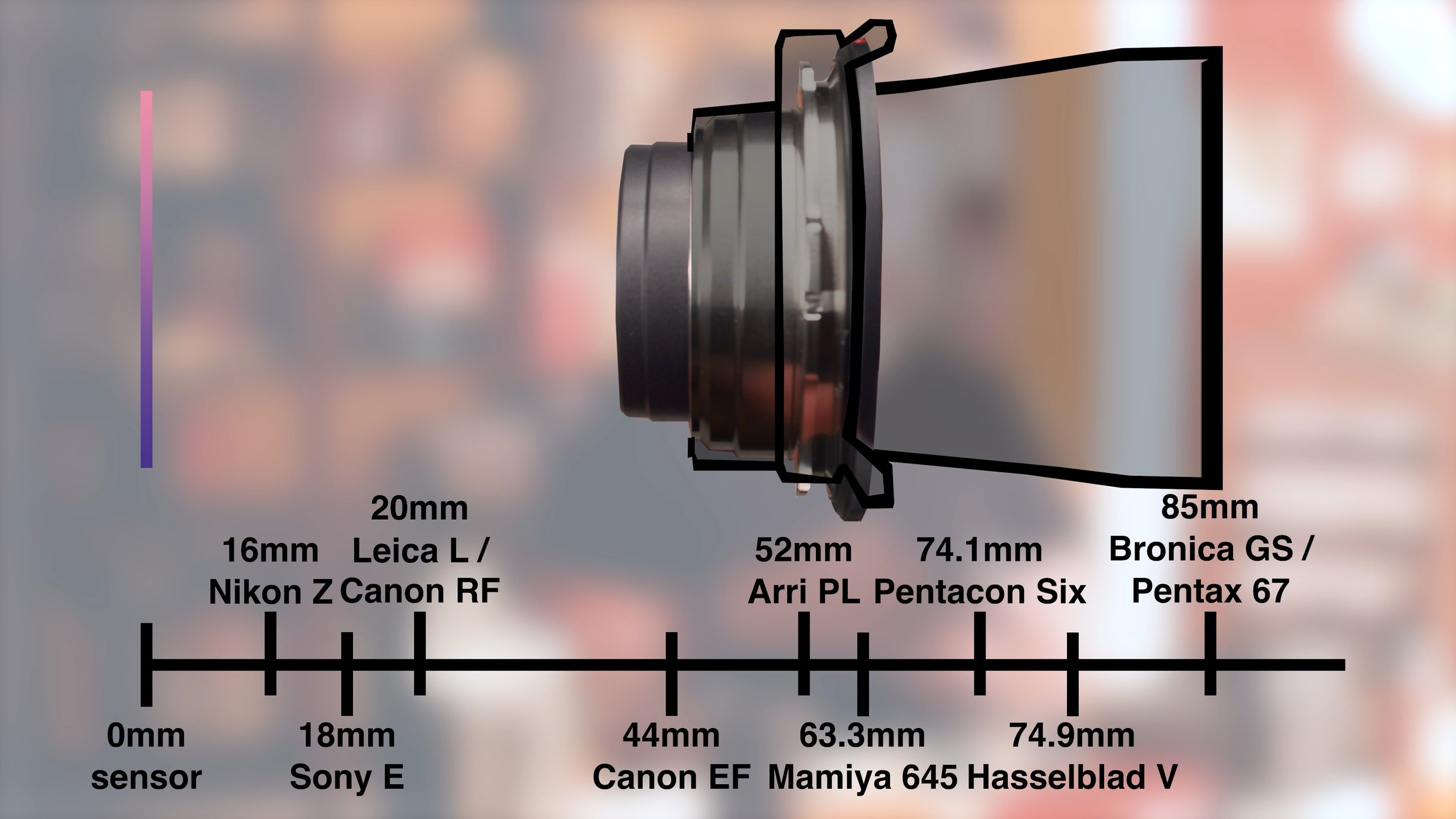Equipment Review Deep Dive: Kipon PRO Lock Baveyes Mamiya 645 to PL 0.7x Focal Reducer
This is probably the most adaptable focal reducer I’ve ever seen hit the market.
This is the Kipon PRO Lock Baveyes PL to Mamiya 645 Focal Reducer.
So how do focal reducers work? Remember when you were a kid there was that one kid who would use a magnifying lens to amplify the sun and make a hot spot where they would start fires or burn ants? A focal reducer works the same way. We should check in on that kid… Focal reducers get a larger image and focus it onto a smaller sensor plane which retains the same image, but it’s brighter. This can be super handy because now you have a brighter image and you can get closer to your subject with a more telephoto lens. All of these adds up to creamy bokeh.
I’ve used Kipon’s Pentax 67 focal reducer in the past, which they noticed and were nice enough to send their newest product my way to review. This adapter is designed to take the Mamya 645 lenses and focuses them onto full frame sensors with a strength of 0.7x. This means you take the focal length and aperture of your lens and multiply it by 0.7x So if you’re using the Mamiya 55mm f/2.8 on a full frame camera, it’s as if you’re using a 38mm f/2 lens. What makes this new PL to Mamiya focal reducer so nice is how close everything is. Look at how tiny the distance is on this focal reducer.
Before we get into the footage I shot of this lens, let’s talk about flange real quick I used to do construction and you might not know this, but the flange of a toilet is this wax ring that goes between the toilet and the sewage pipe to keep the toilet in place. Whenever I talk about flanges, that’s what I think about and maybe now you will too. The flange of a lens is always at a set distance from the sensor. A PL Mount always has to be 52mm from the sensor. Every Mamiya 645 lens mounts at 63.3 mm away from the film plane or sensor. So that’s what opens up this lens adapter to being adaptable to being used on so many different lens adapters.
This is one of the few focal reducers that can be used on professional PL mount cameras such as the Arri LF, the Red Raptor XL, or the Z Cam E2-F8 There are so many full frame camera mounts in addition that are closer than the PL mount’s 52mm and can be adapted to use this focal reducer. I adapted it to my Nikon Z mount camera, but you could also buy adapters for other cameras such as Sony E, Leica L, or Canon RF. The Canon EF might not work if you’re still using a DSLR and were looking to use this on your old 5D mark iv, because the mirror will get in the way. Then on the other side, any medium format lens with a flange distance greater than 63mm can be used like Pentagon Six, Hasselblad V, or Bronica GS. Any lens’s flange distance has to say the same. Lenses can’t mount anywhere else. You can’t adapt a PL lens onto a Hasselblad V camera. First off, you’re going to find that nobody builds that kind of adapter. But if you’re persistent and you duct tape your PL lens to a Hasselblad V camera, you’re going to find that your image is all blurry and it was pointless.
Kipon Baveyes PL to Mamiya 645 Focal Reducer (Like a Speed Booster but not from Metabones)
The versatility of this adapter means that it’ll stay in your kit for longer and adapt to whatever new camera or lens you want to buy in the future. Nobody knows where camera technology will go and which brand or lens mount will be on top next year, but lens technology advances much slower New cameras come out every day, but lenses retain their value much longer. It would suck to invest thousands in Sony E mirrorless glass and then a new Leica L camera comes out with sweet beautiful 12k 14-bit raw footage, but that dastardly flange distance is too long and it’s impossible to adapt them? That’s the nature of the game right now. You won’t feel the pressure to upgrade to the Sony A7s mark 5 when you really want to buy the Panasonic S3H.
There are so many medium format lenses to choose from that were created as the top of their class for optical quality. You could also technically mount it to a super 35 sensor camera if you wanted, that’s fine too. If you have a super 35 sensor and you were thinking of going to full frame some day, you have that option. Or you could adapt it to an Arri Alexa Mini. In the Alexa Mini’s open gate mode, this adapter adapts gives you a slightly larger than full frame at a crop factor of 0.89. I started looking around if I could get weird with this adapter and stack focal reducers. There are a ton of super 35/APC-C to full frame focal reducers on the market, but I don’t think any of them will work with this adapter. I found there’s a Sony E to PL metabones speed booster that exists, but it has 14.5mm of clearance and the Kipon PL back protrudes 26mm from the flange to the end of the glass. So close! Maybe someday someone will come out with a beefy double-powered focal reducer.
Test footage shot with the focal reducer and Mamiya 645 45mm f/2.8 on the Nikon Z6 camera and DJI Ronin RS2
First impression unboxing this adapter is it’s pretty tiny compared to my previous focal reducer. Practically the whole thing fits in a PL Mount lens cap. The light weight will help when flying it on a gimbal. For my sample footage, I shot on the Ronin RS2. There are no electronics, so it’s all manual focus and manual aperture. The adapter has 3 groups of 5 glass elements. It features a locking lens mount mechanism which secures the Mamiya glass firmly. There’s no shake or wiggle on this adapter like you might find with some more affordable eBay adapters. I know I have a handfull of those.
I shot a combination of stills and video. First, I shot some test footage of the Mamiya 645 lenses. I shot with the Mamiya Sekor C 45mm F/2.8, 80mm F/1.9, and 150mm F/3.5. With this adapter, each lens is 1 stop brighter and a few mm wider than what you might expect those lens numbers to look like on a full frame camera. Here’s a shot on film compared to digital. Both were shot with the 80mm F/1.9. The film is Ekachrome 100D.
Next, I tried adapting my Pentax 67 lenses to this adapter, which worked no problem. Here is footage with those lenses and the Blackmagic cinema camera Leica L full frame. This footage is shot in open gate, which uses all of the sensor and requires lenses with a larger image circle. These lenses are still fully covered. The only lens where I noticed some vignetting was the Pentax 67 200mm F/4. That lens is like that, though. It vignettes on my Pentax 67 film camera sometimes too. I took this adapter up to Vancouver Canada with me for a commercial shoot. I trusted them to work well when money was on the line.
Flange focal distance explained
Next, I tried getting a little experimental with the adapter. I tried it out on a Fujifilm GFX 100 ii medium format camera. Medium format focal reducing to medium format for an extra “medium” look! This isn’t the intended use of this focal reducer that Kipon expected people to do, but I was curious. What I found was that in video mode, there are very subtle vignettes that are easy to brighten up in post. In photo mode, however, the full sensor is used, making the image taller. Here you can see much more pronounced vignetting, especially with the lens stopped down to F/22. This is because the image circle of this adapter is 52mm, but the Fujifilm GFX sensors require 55mm. So close! It’s close enough if you’re filming video, but not good enough for stills.Kipon sells a 0.8x strength GFX Mamiya 645 adapter. This must be how they science’d their way around this, by making the focal reducer slightly less powerful than this 0.7x focal reducer.I didn’t test it on a Red Vista Vision sensor like the Raptor, but based on what I saw you should be covered no problem.
The only negative thing I can think of about this product is the price is a little high at $1880. That might be the most expensive focal reducer on the market. If you don’t mind losing the feature of a locking Mamiya mount and maybe sacrificing a little bit of this product’s adaptability, then you can find similar medium format focal reducers for about half the price from Kipon and other manufacturers. You could probably find something that’s still in the middle somewhere. Overall, it was a fun piece of glass to use and is much more future-proof than the adapter I had before. It really expands the cameras and lenses I can adapt to this lens. The all-metal build quality is great and firmly holds the lenses in place.



